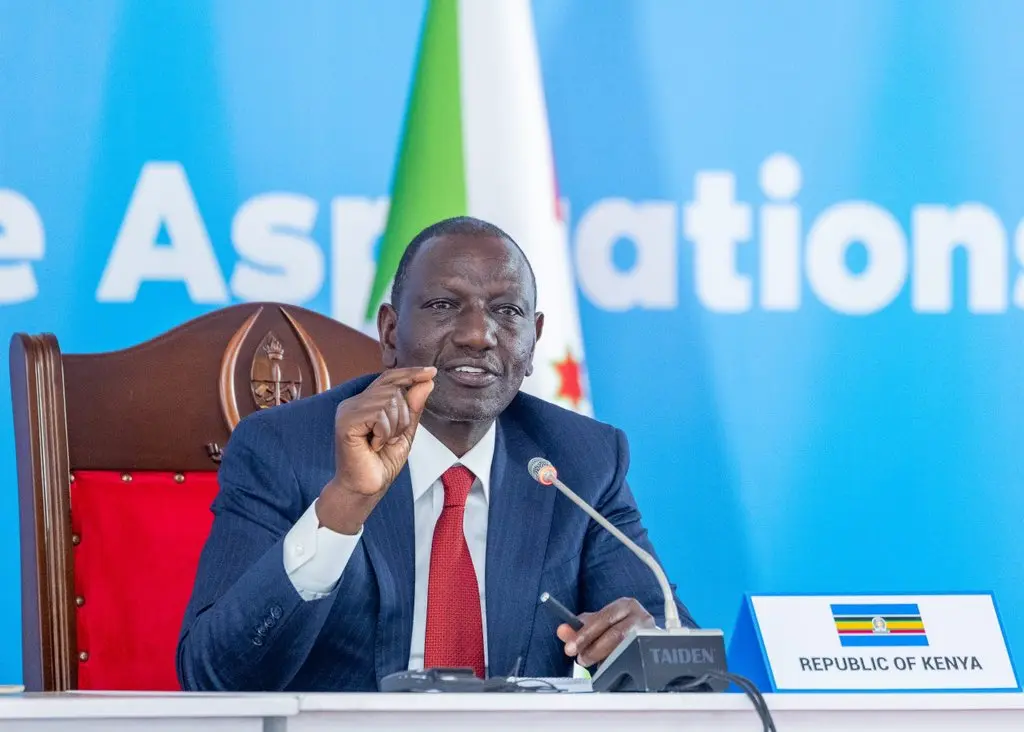The vibrant city of Arusha recently hosted the 24th Ordinary Summit of the Heads of State of the East African Community (EAC), a meeting emblematic of the region’s aspirations for unity and shared prosperity.
Against this backdrop, President Salva Kiir Mayardit of South Sudan passed the mantle of leadership to Kenya’s President William Ruto. This ceremonial transfer of authority symbolized more than just a routine transition; it reflected the bloc’s evolving dynamics.
However, beneath this surface of optimism lies a complex reality marked by economic disparities and policy divergences that continue to challenge the EAC’s cohesion and effectiveness.
As the baton changes hands, the pressing question remains: how can a region so economically and politically diverse find unity in its ambitions? This question is particularly pertinent given the bloc’s need to harmonize economic priorities and navigate policy differences that risk undermining its goals.
Economic Diversities: A Double-Edged Sword
The EAC, encompassing seven member states—Kenya, Tanzania, Uganda, Rwanda, Burundi, South Sudan, and the Democratic Republic of Congo (DRC)—presents a fascinating patchwork of economic opportunities and challenges. This diversity, while potentially advantageous, also creates significant hurdles.
Diverse Economic Structures
Kenya and Tanzania are at the forefront, with relatively advanced economies marked by diverse sectors such as agriculture, manufacturing, and tourism.
RELATED: Balancing Political and Economic Goals: The Challenges Ahead for the EAC
Kenya’s financial services and infrastructure make it a regional hub, while Tanzania leverages its natural resources and access to strategic ports.
Conversely, nations like South Sudan and Burundi rely heavily on subsistence agriculture, grappling with underdeveloped infrastructure and recurring conflicts. The DRC, a recent addition, brings immense mineral wealth but struggles with political instability and logistical barriers.
Trade and Investment Imbalances
Intra-EAC trade remains disappointingly low, at about 20% of total trade volumes, due to structural barriers like inadequate infrastructure and persistent non-tariff barriers (NTBs).
While Kenya and Uganda dominate regional exports, smaller economies like Burundi and South Sudan remain heavily import-dependent, exacerbating economic asymmetries.
Policy Divergences: The Integration Conundrum
While the EAC was founded on the ideals of integration, member states’ divergent policies often obstruct progress. These differences span critical areas:
Monetary Policy and Currency Harmonization
The ambition for a single currency under the East African Monetary Union (EAMU) by 2031 faces daunting obstacles. Divergent monetary policies, inflation rates, and fiscal discipline create disparities.
For instance, while Kenya and Tanzania meet macroeconomic convergence criteria more consistently, other members lag.
Trade Policies
Despite a commitment to a Customs Union, NTBs such as export bans, customs delays, and tariff disputes persist. These reflect broader policy misalignments that undermine the region’s trade goals.
Energy and Infrastructure Development
Energy priorities vary significantly across member states. Kenya’s investment in renewable energy contrasts with Uganda’s reliance on oil exploration, creating challenges for cohesive infrastructure development. Collaborative projects like the Standard Gauge Railway (SGR) often face delays due to funding and coordination issues.
Political Governance and Stability
Governance challenges and varying degrees of political stability hinder the vision of a political federation. Countries like South Sudan and the DRC grapple with internal conflicts, while strained relations between Rwanda and Uganda complicate regional diplomacy.
The Leadership Test for President Ruto
President William Ruto inherits a complex legacy as the EAC’s new chair. His leadership will be instrumental in navigating these challenges and fostering deeper integration.
Revitalizing Intra-Regional Trade
A critical step lies in reducing NTBs and streamlining customs processes to enhance trade efficiency. By aligning EAC efforts with the African Continental Free Trade Area (AfCFTA), the bloc can position itself as a key player in intra-African trade.
Strengthening Institutional Frameworks
Enhancing the capacity of EAC institutions like the East African Legislative Assembly will be crucial for enforcing regional protocols and ensuring accountability.
Accelerating Infrastructure Development
Coordinated investments in transportation, energy, and communication infrastructure are vital. Public-private partnerships (PPPs) could play a key role in bridging funding gaps and accelerating project timelines.
Fostering Political Cohesion
Diplomatic efforts to resolve disputes and promote stability will be essential. Kenya’s role as a regional mediator positions President Ruto to lead these initiatives effectively.
The Way Forward: Towards a Convergent EAC
The EAC’s economic and policy divergences need not be insurmountable obstacles. Instead, they represent opportunities for innovation and strategic alignment.
Adopting Flexible Integration Models: Tailoring integration efforts to accommodate the capacities of individual member states can allow progress without overburdening less developed economies.
Promoting Economic Complementarity: The region can optimise its diverse resources by encouraging specialization based on comparative advantages.
Harmonizing Policies through Dialogue: Regular policy dialogues among member states can align national priorities with regional goals, fostering mutual trust and cooperation.
The EAC stands at a critical juncture where leadership and vision are paramount. As President William Ruto takes the helm, he is responsible for guiding the bloc toward a future defined by unity and shared prosperity.
The challenges of economic disparities and policy divergences are real but surmountable with collaborative efforts and a pragmatic approach.
Through visionary leadership and unwavering commitment, the EAC can transform its diversity into a unifying strength, paving the way for a prosperous and integrated East Africa.
The journey will be demanding, but the rewards—a stable, thriving, and cohesive region—are well worth the effort.

